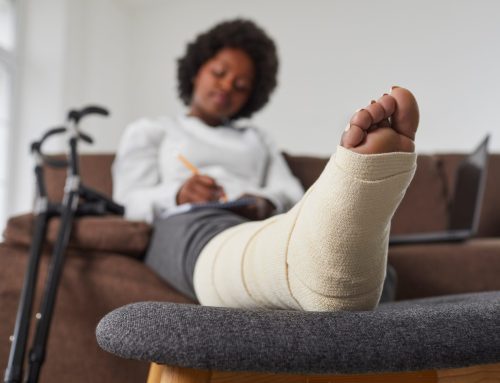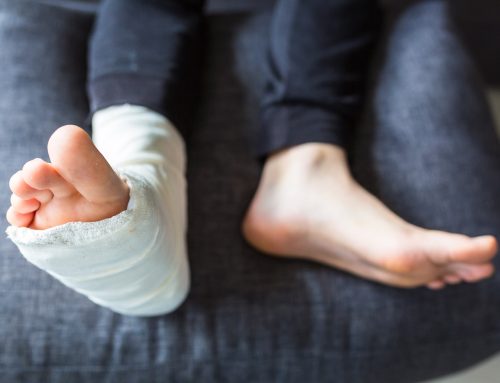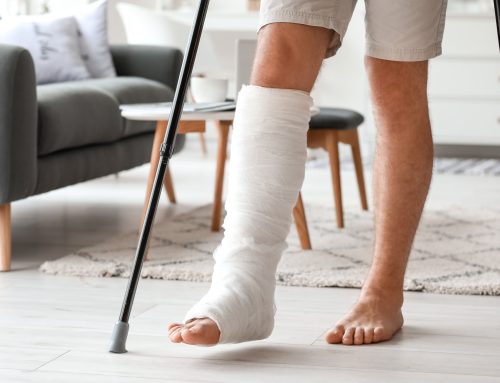Fractures can happen to anyone, regardless of age or lifestyle. They’re not just a result of accidents or falls; certain medical conditions can make the bones more susceptible to breaks. When we talk about preventing future fractures, it’s crucial to understand the complications that might arise from a broken bone. One such complication is compartment syndrome, a condition that, while not incredibly common, can have severe consequences if not addressed promptly.

The Anatomy of a Fracture
A fracture is more than just a broken bone. When the bone is compromised, the surrounding tissues, muscles, and blood vessels can also be affected. Healing is more than just mending the bone; it's also about ensuring that the surrounding anatomy heals correctly to prevent long-term damage and promote functionality and strength in the healing area.
Compartment Syndrome Unveiled
Compartment syndrome is a condition that occurs when there’s increased pressure within the muscles, which can lead to muscle and nerve damage. Following a fracture, due to swelling or internal bleeding, pressure can build up within the muscle compartments. This increased pressure can compromise blood flow, leading to a lack of oxygen and nutrients to the muscle and nerve cells. This severe complication can lead to cell damage and death if not promptly treated.
There are two types of compartment syndrome, and it’s not always a fracture that’s the cause.
Acute Compartment Syndrome (ACS)
This is the more serious form. It usually happens suddenly after a major injury. Imagine a brutal hit during a football game or a bad fall while cycling. Here, the muscles in a part of the body get squeezed tightly, causing a lot of pressure. This is dangerous because it can stop the regular flow of blood and oxygen that muscles need to work correctly. If it's not treated quickly, it can cause long-lasting damage or even become life-threatening. That's why if someone gets ACS, they need to see a doctor right away.
Chronic Compartment Syndrome (CCS)
This form is less severe. It tends to come around after heavy exercise or physical activity. Think of a runner who goes for long distances or someone who lifts weights. In CCS, the muscles still feel a lot of pressure, but it's not an immediate emergency. It comes with its own problems like pain or trouble moving the affected part of the body. It’s more about managing the discomfort and finding ways to avoid causing more stress to the muscles involved.
So, in short, compartment syndrome can be a quick, severe issue (ACS) or a slower, manageable condition (CCS), but in both cases, understanding and proper care are key.
Recognizing the Risks
Understanding the risks and signs of compartment syndrome is essential in preventing long-term damage. Symptoms might include:
- Severe pain that doesn’t improve with pain medication
- Numbness
- Tingling
- A tight, full feeling in the muscle.
Early recognition and intervention are crucial for a positive outcome and preventing future complications or fractures.
Prevention: Building Stronger Bones and Muscles
Preventing future fractures and complications such as compartment syndrome involves nurturing bone and muscle health. Here are some strategies that everyone can adopt to improve overall musculoskeletal health:
Nutrition: A diet rich in calcium and vitamin D promotes bone strength. Incorporate a variety of fruits, vegetables, lean proteins, and whole grains to support overall health.
Exercise: Regular weight-bearing and muscle-strengthening exercises can help in enhancing bone density and muscle health, making them more resilient against fractures. It’s important that you switch up your exercise routine, as repetitive movements such as running or biking can cause chronic compartment syndrome.
Healthy Lifestyle: Avoiding smoking and limiting alcohol consumption are also essential for bone and muscle health.
Early Detection: Regular check-ups and necessary screenings can help in the early detection of bone weaknesses, allowing for timely intervention and prevention strategies.
The Way Forward: Advanced Healing Technologies
In the evolving world of medical science, technological advancements offer new horizons in the healing process. The Melmak LIPUS device represents one of these remarkable innovations, bringing a novel approach to facilitating the healing process of fractures.
It utilizes low-intensity pulsed ultrasound technology, administered non-invasively, working meticulously to stimulate the bone to heal. The device activates cell reproduction and enhances cellular behaviour at the fracture site, contributing to a more accelerated and effective healing process.
The Melmak LIPUS device not only offers a practical and convenient way to foster healing but also adds a layer of prevention aimed at reducing the risks associated with future fractures and complications like compartment syndrome. Its long-standing history of proven results speaks volumes about its efficacy, providing a beacon of hope for those navigating the arduous journey of fracture healing and prevention.
Learn more about the device that has been helping fractures heal 38% faster for over 20 years. Contact Fracture Healing to find out if a LIPUS device is right for you.
Have you or someone you know ever experienced compartment syndrome? What surprised you the most about this condition? Share your thoughts with our readers in the comments below.






Leave A Comment